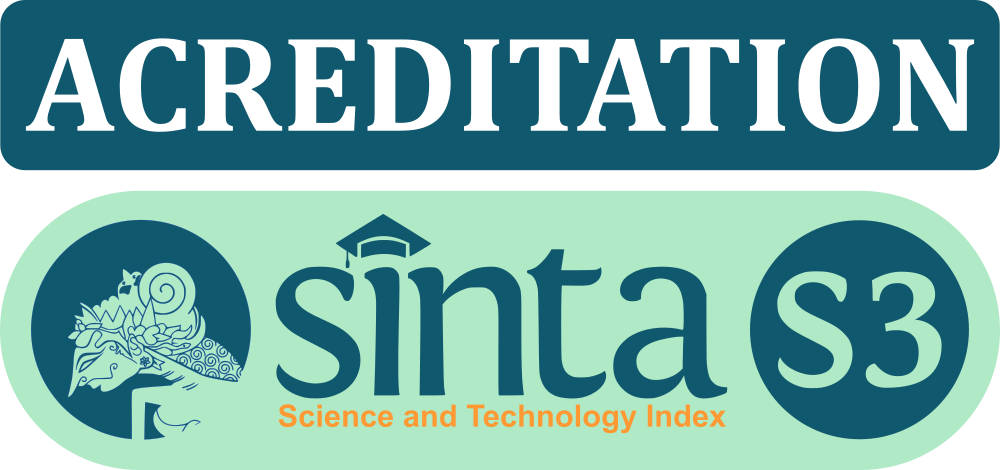Assessment of Electric Propulsion Application in Light Rail Transit (LRT)
DOI:
https://doi.org/10.29122/mipi.v15i3.5043Keywords:
Traction motor, V/f control, VVVF inverterAbstract
In this paper, one of the most important parts of self-propelled vehicles is presented, namely the Light Rail Transit (LRT), especially the propulsion system. LRT is already operating in several major cities in the world, but in Indonesia its construction has just been completed and is currently operating in Palembang, South Sumatra, and Greater Jakarta area (Jakarta-Bogor-Depok-Bekasi). The methodology used to describe and analyse the LRT propulsion system begins by first reviewing the literature on the development of LRT-type mass transportation in developed countries, then a study of technological developments is carried out on each component of the propulsion system, especially for the propulsion of rail facilities. One of the main components of the LRT-type rail propulsion system that will be used and developed in Indonesia is the VVVF inverter, which functions to regulate the speed of the traction motor which is designed to work in a certain frequency range, for example between 0 Hz to 70 Hz. The VVVF inverter output is controlled by a very popular principle used in railways, namely the constant V/f setting technique. The initial start of the LRT requires high torque to overcome train resistance and to accelerate in a few minutes. To meet these needs while still paying attention to energy savings, the traction power (traction effort) is adjusted, which is the power needed to move the train from a speed of 0 km/hour to 30 km/hour. Traction power is adjusted by varying the frequency to control the speed, the terminal voltage is also varied so that the ratio of the constant V/f constant is maintained at 15.7 V/Hz. The maximum torque of the motor becomes constant at every speed change.
References
H. H. Topp, “Innovations in tram and light rail systems”, Proceedings of the Institution of Mechanical Engineers Part F Journal of Rail and Rapid Transit, May 1999
L. E. Bien, I. Kasim & H. Hartanto, “Sistem Kendali Kereta Otomatis pada Kereta Rel Listrik VVVF”, JETri, Volume 5, Nomor 2, Februari 2006.
I. M. Putra and A. Windharto, “Desain Carbody Eksterior-Interior Light Rail Transit untuk Kota Palembang dengan Konsep Iconic dan Modern”, Jurnal Sains dan Seni ITS, Vol. 6, No.2, tahun 2017.
Gourambika, M. S. Aspalli, “Speed Control of Three Phase Induction Motor by VVVF method using G7/A-1000 Drive”, International Journal of Recent Technology and Engineering (IJRTE), Volume-3 Issue-4, September 2014.
J. F. Gieras, N. Bianchi, “Electric Motors for Light Traction”, Article in Epe Journal, • February 2004
P. K. Hingmire, S. K. Rayarao, “Development of a V/f Control scheme for controlling the Induction motorboth Open Loop and Closed Loop using MATLAB”, International Journal of Scientific Engineering and Applied Science (IJSEAS), India, 2016.
B. Akin and N. Garg, “Scalar (V/f) Control of 3-Phase Induction Motors”, Texas Instruments, Incorporated Application Report SPRABQ8–July 2013, Dallas, Texas.
LITERATURE DOCUMENTS
H. M. D. Habbi, H. J. Ajeel, I. I. Ali, “Speed Control of Induction Motor using PI and V/F Scalar Vector Controllers”, International Journal of Computer Applications, Baghdad, October 2016.
R. Isaac, L. Fulton, “Propulsion Systems for 21st Century Rail”, World Conference on Transport Research - WCTR 2016 Shanghai. 10-15 July 2016.
N. Rahaman, H.V. Govindraju, “Modelling & Simulation of a Three-Phase Electric Traction Induction Motor Using Matlab Simulink”, International Journal of Electrical, Electronics and Computer Systems (IJEECS), India, 2014.
Min-Yan DI, “Simulation Analysis of SPWM Variable Frequency Speed Based on Simulink”, IFSA Publishing, S. L., Sensors & Transducers, Vol. 163, Issue 1, January 2014.
A. Idir, M. Kidouche, “Real-Time Simulation of V/F Scalar Controlled Induction Motor using RT-Lab Platform for Educational purpose”, Proceedings of the 2013 International Conference on Systems, Control and Informatics, 2013.
W. Emar, H. Sarhan, R. Al-Issa, I. TTrad & M. Awada, “V/F Control of Squirrel Cage Induction Motor Drives Without Flux or Torque Measurement Dependency”, International Journal of Robotics and Automation (IJRA), Volume (2), Issue (2), 2011.
P. S. Raichurkar, A. L. Jamadar, “V/F Speed Control of 3 phase Induction Motor using Space Vector Modulation”, International Journal of Engineering Research & Technology (IJERT), India, 2010.
D. Jee, N. Patel, “V/f Control of Induction Motor Drive”, A Thesis submitted in partial fulfillment of the requirements for the degree of Bachelor of Technology in Electrical Engineering, Department of Electrical Engineering, National Institute of Technlogy, Rourkela, Odisha, India.
B. Akin and N. Garg, “Scalar (V/f) Control of 3-Phase Induction Motors”, Texas Instruments, Incorporated Application Report SPRABQ8–July 2013, Dallas, Texas.
Downloads
Published
How to Cite
Issue
Section
License

This work is licensed under a Creative Commons Attribution-ShareAlike 4.0 International License.
Open Access Policy
MIPI provides immediate open access to its content on the principle that making research freely available to the public supports a greater global exchange of knowledge.
MIPI by BRIN is licensed under a Creative Commons Attribution-NonCommercial-ShareAlike 4.0 International License. Permissions beyond the scope of this license may be available at http://ejurnal.bppt.go.id/index.php/MIPI


















